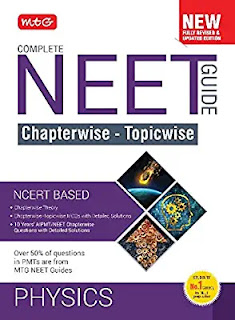How To Avoid Negative Marks In Exam? 9 Tips To Reduce Negative Marks
9 Best Tips To Reduce Negative Marks
While the aspirants study entire year in advance for the highly competitive exam, during the last few months, the candidates find themselves in a tricky situation. While preparation is one aspect, the real test of one’s knowledge and caliber is when the students actually attempt the exam. More than one’s knowledge base and intelligence, what comes into play is the candidate’s presence of mind and accuracy in attempting the questions which the students know and their smartness in attempting the ones they are not very sure of. As per NEET PG format, students get 4 marks for a correct response and 1 mark will be deducted for the wrong response.
There are apparently two contradicting views on whether negative marking is in favor or against the candidates.
AdvantagesDisadvantagesIt yields scores that are not inflated by guesswork.Sometimes students’ guesses may work, defeating the purpose of testIt discourages Random guesses, making the scores more reliable.It can be easily exploitedAn effective tool to have a quick check on students’ knowledge
Tips to reduce Negative Marking in NEET PG
1. No Wrong Answer
In a bid to attempt more number of questions, students start making wild guesses after 2 hours into the exam, thereby leading to attempting questions they are unsure of. The students need to understand that this is not the time to test your luck. Also, more often than not, it is seen that the attempts made using guesswork lead to negative marking. Usually, such students do not make it to the merit list.
For instance, you know 50 questions for sure – you get 200 x 2 =400
On attempting 50 questions by guesswork – 50 marks get deducted, reducing your score to (400-50) 350.
Thus, the idea is to apply guesswork to only those questions you have some inkling about and leave the questions you are completely unsure of.
2. Brain-warmer
Identify the easy questions and begin your set with simpler questions to eliminate stress. As stress adversely affects a student’s confidence, the best trick is to start with simpler questions first. This directly affects student’s psychology by reinstating student’s faith in himself. It is like warming up your brain to prepare yourself for tough questions ahead. On the other hand, beginning with tough questions leads to multiplied stress, which causes the students to mark wrong answers, even to the questions students were well-versed with.
3. Read Question Twice to Avoid Erroneous Marking
Carefully read the questions and be extremely cautious of words like not except etc. Students mostly ignore such words thereby marking wrong choices. Thus students need to be doubly sure of what the question is.
4. Read All Options Carefully
For instance, you get the question as below:
Posterior Pituitary or Neuro secretes:
a. Oxytocin b. TSH
c. Prolactin d. Oxytocin and Vasopressin
On reading the question, and seeing the first option, in excitement, you would mark ‘a’ as your choice without reading the rest of the options. Attempting a question you have a thorough knowledge of is the worst thing. Many times ‘All of the above’ is also a correct response, which many students blatantly ignore.
5. Elimination Guesswork
If you are doubtful about certain questions, you can eliminate the choice one by one to decipher the correct answer. If you eliminate two options you will have 50% chance of being correct and it you eliminate 3 options, there is 100% chance of you being correct.
6. Take 3 Rounds
Effective time division is another thumb rule to avoid negative marking. The idea here is to refine the best of questions as per your ability. If you keep enough time for revision, you will have no time left for negative marking as most of your time will be spent on analyzing the questions you can do using your knowledge, rather than viling away your time reading the questions that are completely new to you. Divide your time into 3 parts as below:
RoundsQuestion TypeTimeWhat to do?
Round 1 EasyFirst 150 minutes:
1. Mark All the Questions That You Know (100%)
2. Do not take more than 30 seconds per question
Round 2 Hard Next 50 minutes:
1. Skim through Marked questions
2. You can Take 1 minute per question
3. Work on Elimination Strategy
Round 3 ReviseLast 10 minutes:
1. Take a fast look through
2. No last minute changes or guess work
7. Take Risks: Use it Or Lose It!
Don’t be afraid to take pre-existing knowledge-based risks. More than 180-200 questions will be easy. Rest of those questions are there to test your analytical ability. No one can be 100% sure of these questions. What the NEET PG examiners are looking at is your reasoning coupled with your intelligence. The qualifiers will be those who attempt 50-80 questions by their using reasoning ability with the help of the elimination method. If you succumb to stress or shy away from trusting your gut on these questions, you will end up making a big mistake.
8. Avoid Last Minute Rush
Last minute try is mostly catastrophic. Experts suggest that students should submit their responses 10 seconds before time to refrain from making wild and unscrupulous guesses.
9. Reverse Psychology: Evaluate yourself prior to the exam
Mock tests are the best way to assess yourself. Give as many mock tests as possible and mark responses using complete guesswork. Check your marks to see how many of your guesses really worked. This dissuades the students to make haphazard guesses during the exam.





Comments
Post a Comment